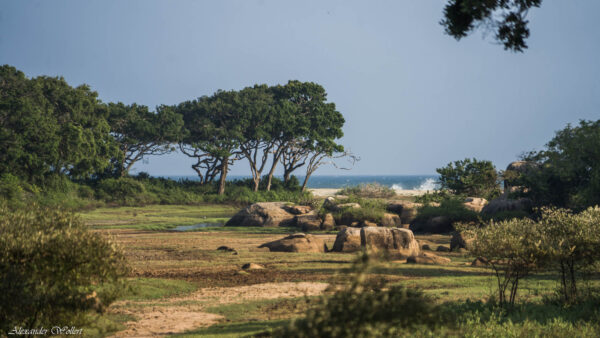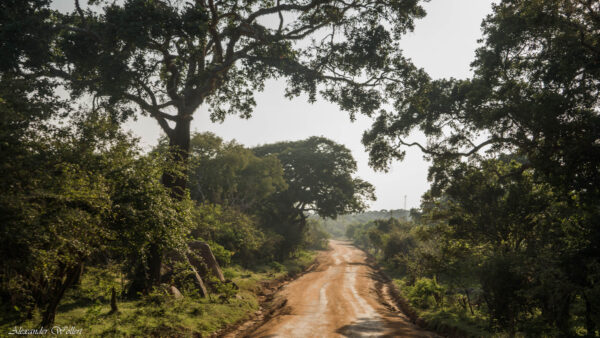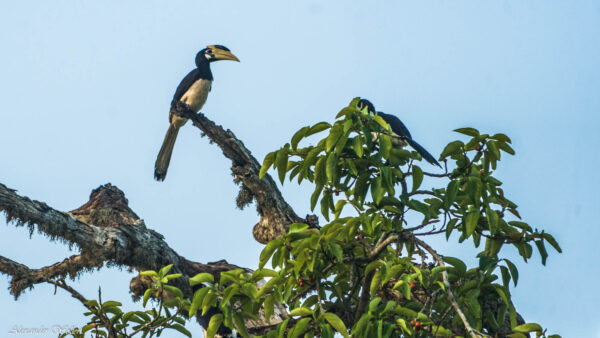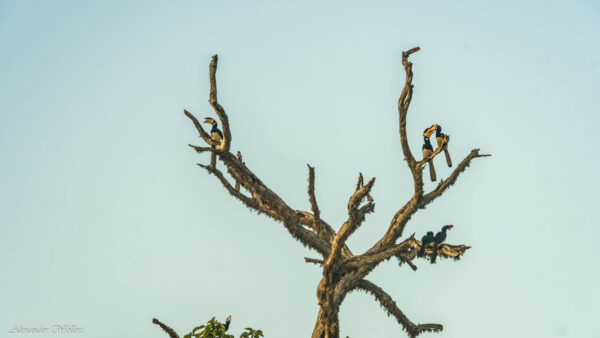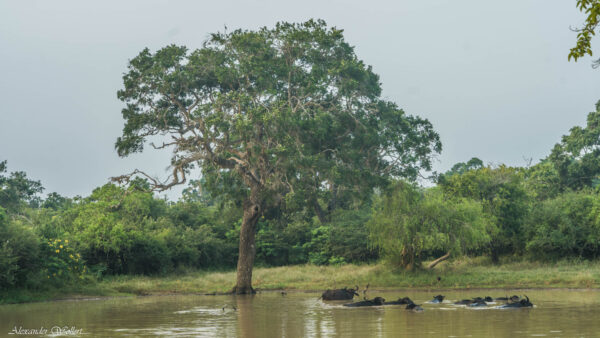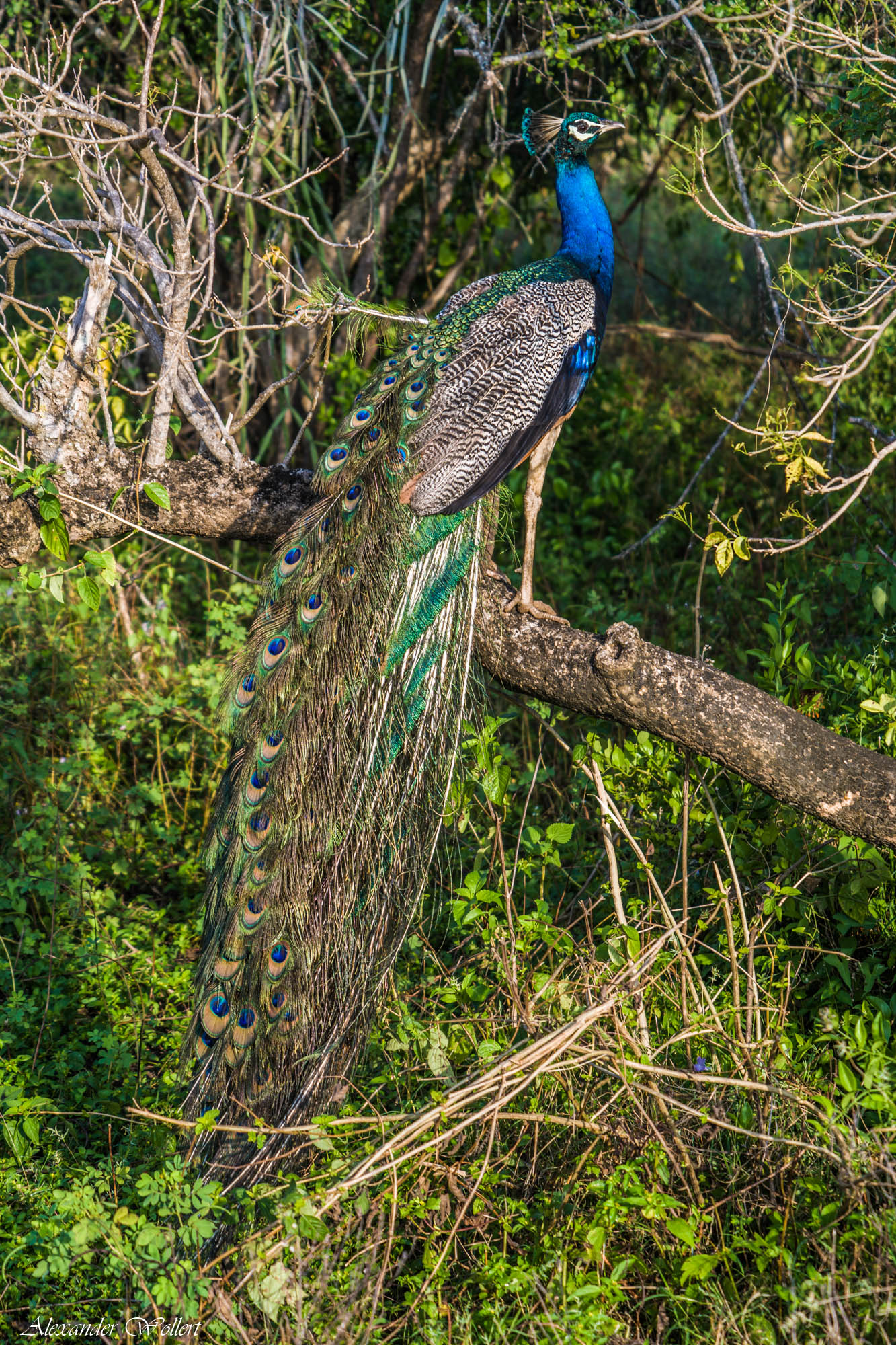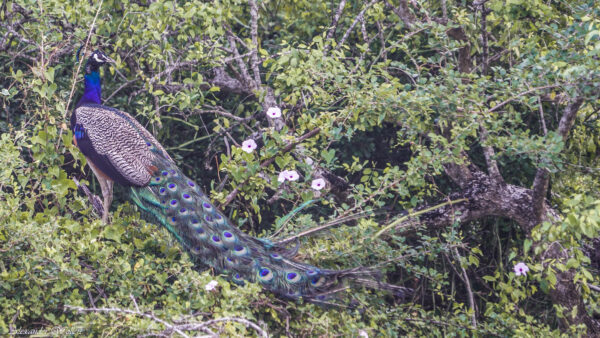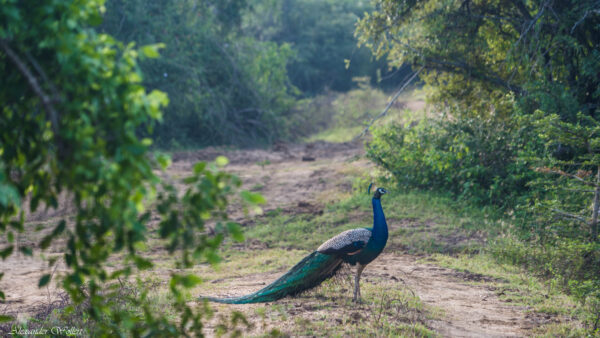Diary Entry
At 4:30 a.m., Sara, Shima and I set out to start the day. Today we are going on safari and want to see the last large wild animals in Sri Lanka. A large Toyota Hilux picks us up from our accommodation in Tissamaharama. We drive through the darkness to Yala National Park.
This is one of the largest, but also one of the most touristy national parks in Sri Lanka. That’s why we treat ourselves to a private driver so that we can move around the park independently of the other tours and have a higher chance of seeing the big but shyest animals: leopards, bears and elephants!
Sri Lanka’s Big Three: Leopard, Bear, Elephant
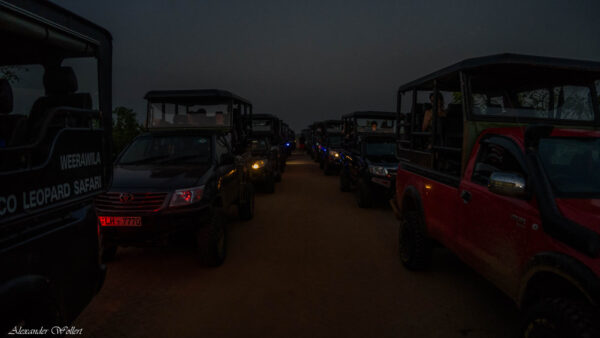

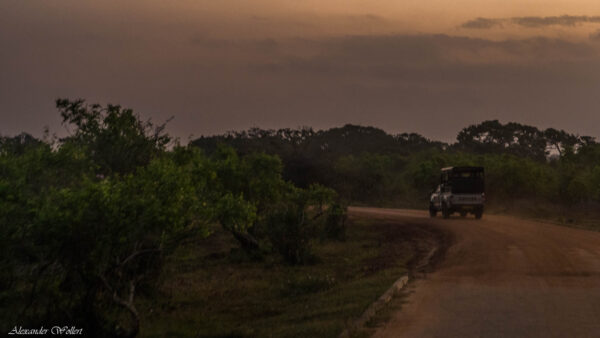

There are even more tourists than I feared
Our driver Sanka knows his stuff. He speeds through the night like a madman past all the other vehicles and almost makes it to pole position at the entrance to the national park. A long line of vehicles quickly forms behind us. It is shocking to see how many cars full of people flood the park at the same time.
The barriers open at exactly 6 o’clock.
Sanka just needs a stamp on the ticket he has already prepared for the vehicle. With the door still almost open, we drive under the opening barrier. Then Sanka overtakes a few other vehicles and slightly exceeds the speed limit.
Is this still Safari or already Formula 1?
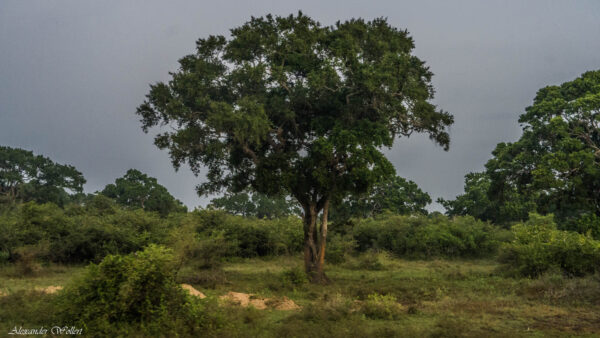
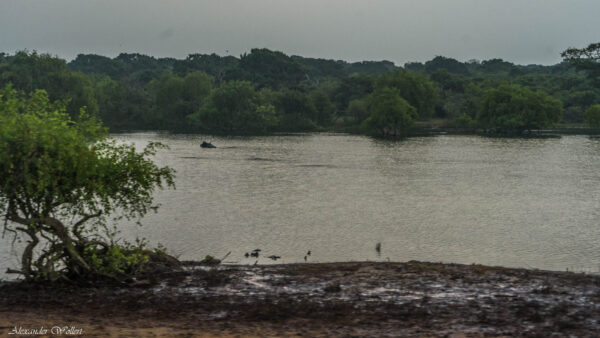
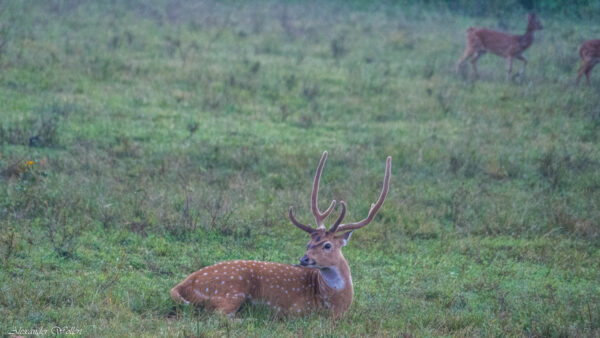
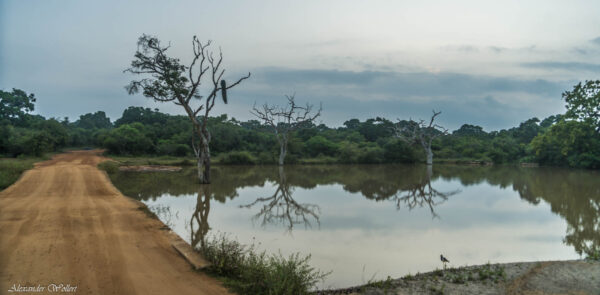
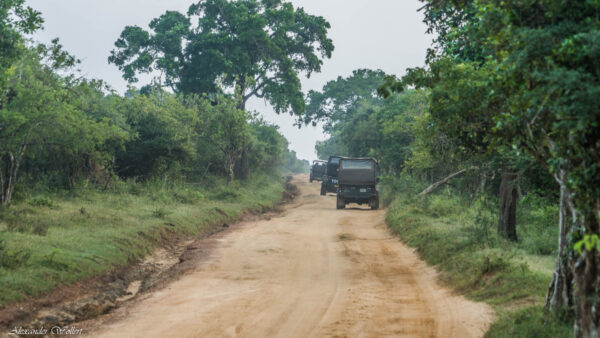

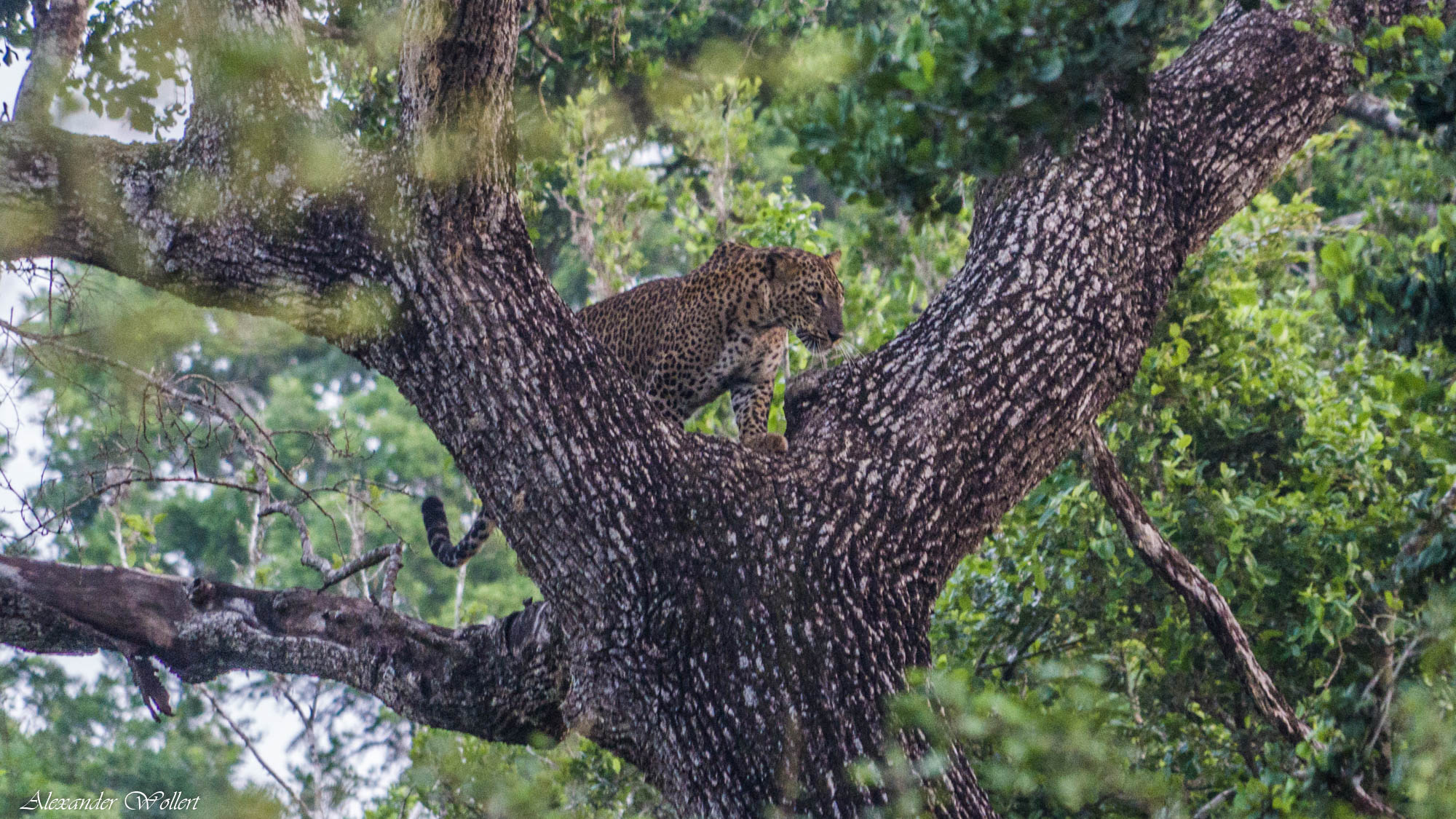
Why the stress? I can hardly photograph the group of axis deer at the waterhole. And was there a warthog over there? But then comes Sanka’s difficult to understand answer:
Leopard!
We find a leopard, still relaxing in a tree near the road, digesting its evening meal before it is chased into the thicket by the hordes of tourists.
Sanka explains that it is the female “Jessica“. She quickly gets fed up with the hundred off-road vehicles below her, leaves her tree and disappears.

We see a flock of hornbills on a tree under a waterhole full of water buffalo
Hornbills wall up the females with the nest in tree holes during the breeding season
Now the tour of the park is more relaxed for us too. Sanka is happy to have ticked this point off our list. “The leopard” is the highlight of the safari and he seems to feel the pressure of having to offer this highlight to every tourist. So now we just drive relaxed in every direction.
To be even more relaxed, we opted for both a private tour and a full-day tour. Most people only drive through Yala for half a day and we hope to experience more of the isolation of nature in the afternoon.
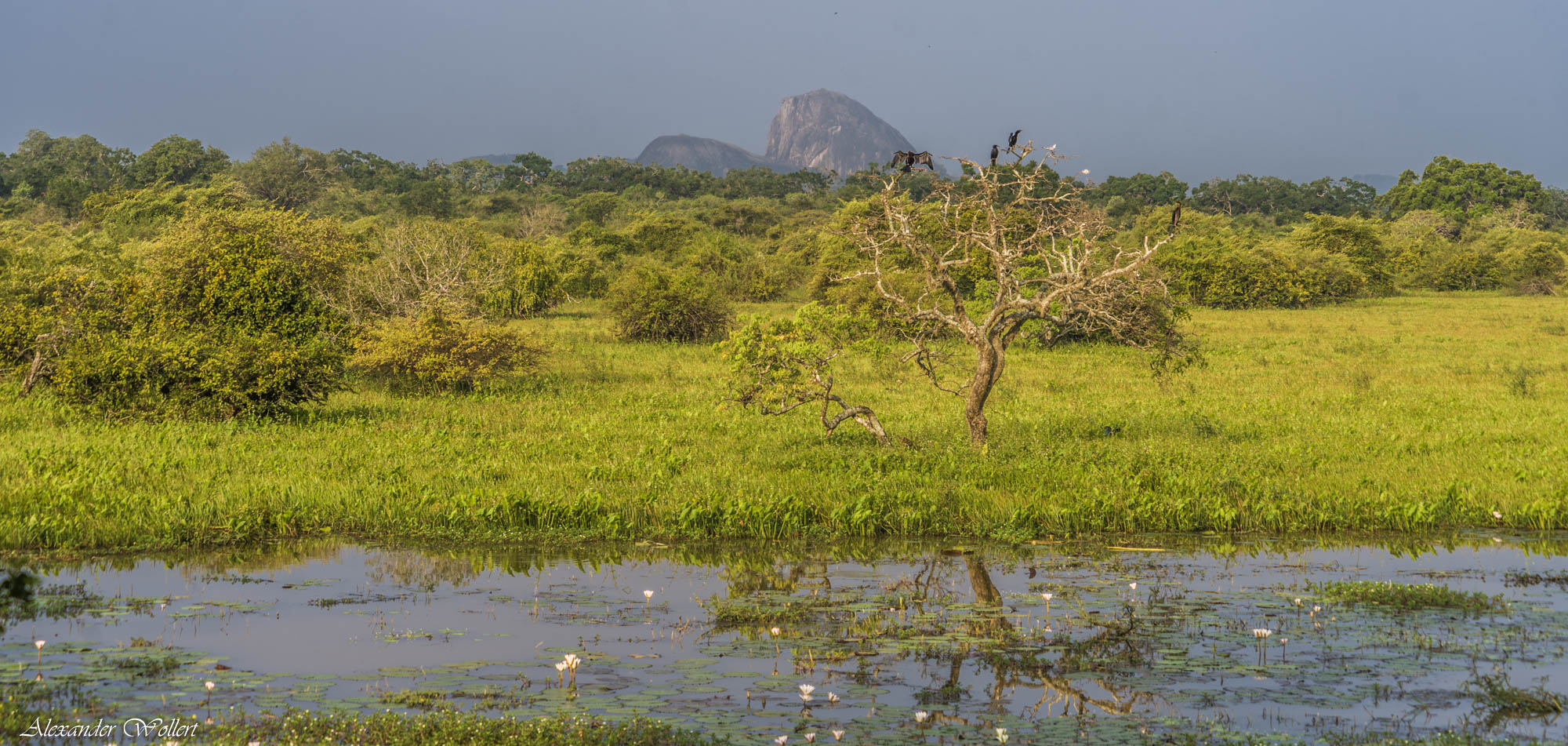

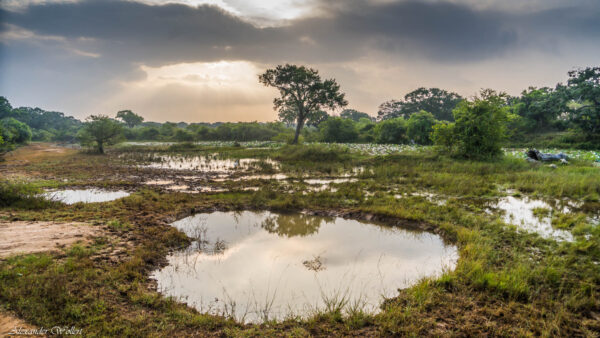
The morning mist gives nature something mystical

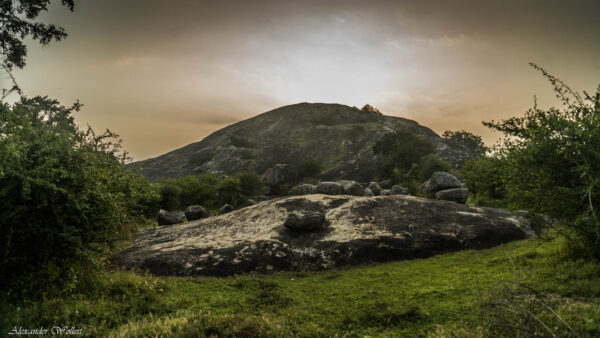
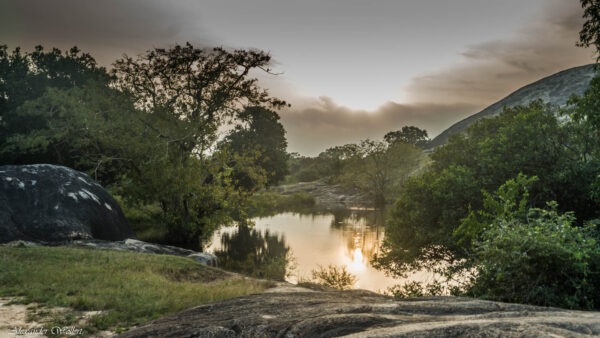
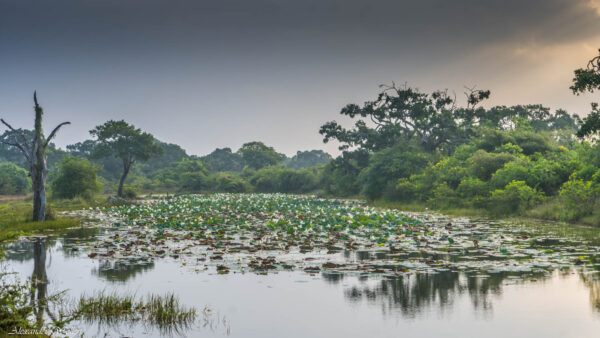
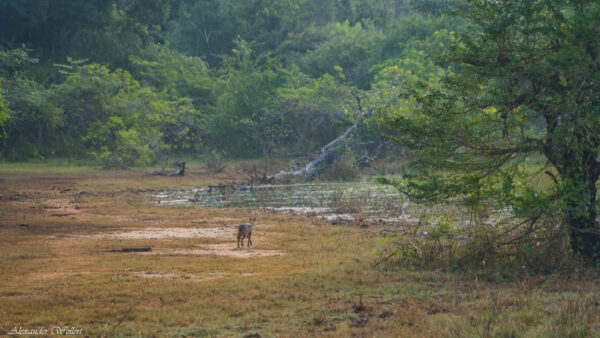
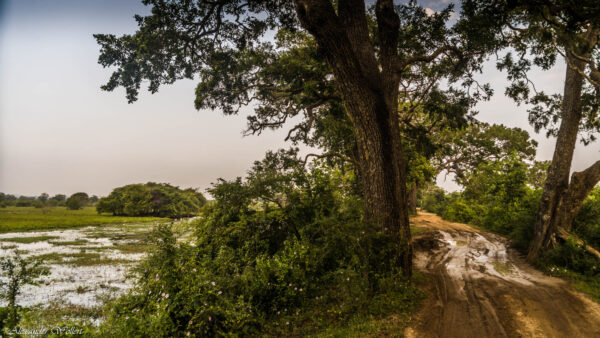
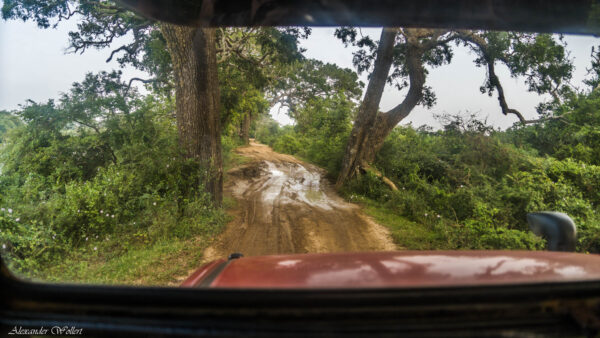

The other tourists continue hunting for leopards, we drive alone through the other parts of the park and have nature to ourselves.


In the next few hours we are even luckier. We see monkeys, deer, peacocks, monitor lizards, eagles, mongooses, bee-eaters, storks, pigs and water buffalo. The water buffalo are very aggressive, Sanka warns us.
It is better if we do not get too close to them. But of course this also applies to all other animals that we do not want to disturb in their environment.
Sanka tells us that the national park covers about 1,500 km2. Yala is divided into 5 blocks. Of these, only the first block is accessible for safaris. That reassures us. We had the impression that the park resembled a zoo and that people were literally hunting the animals – but the animals have enough space to avoid people and live naturally.

Only a fifth of the park area is accessible to visitors!

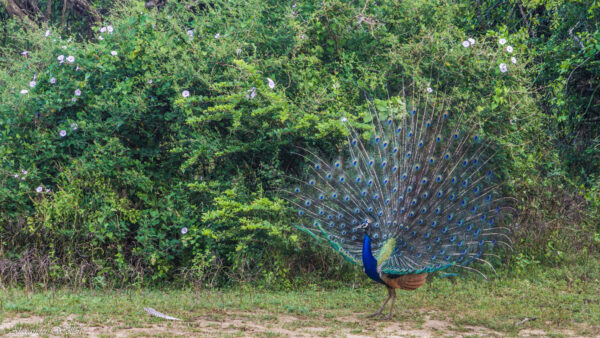
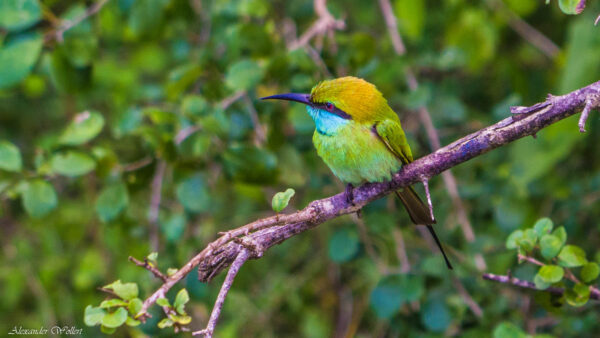
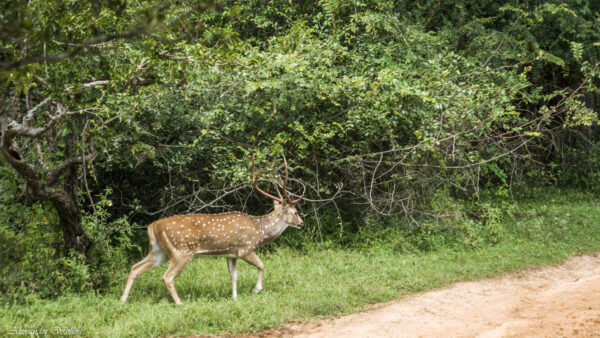
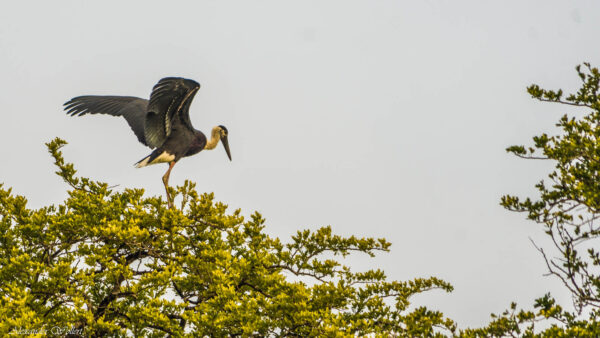
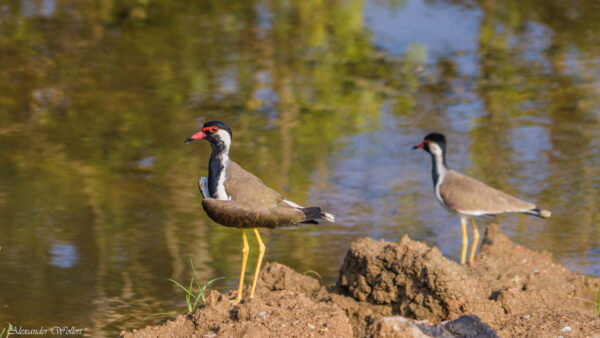
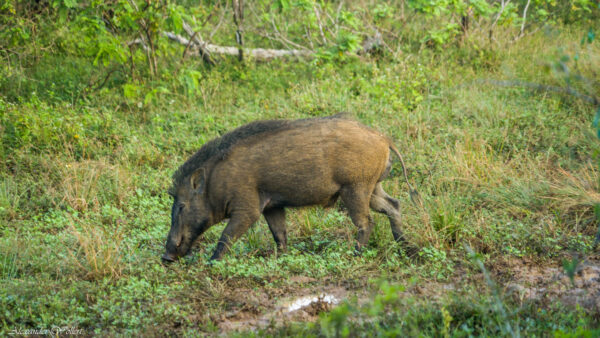
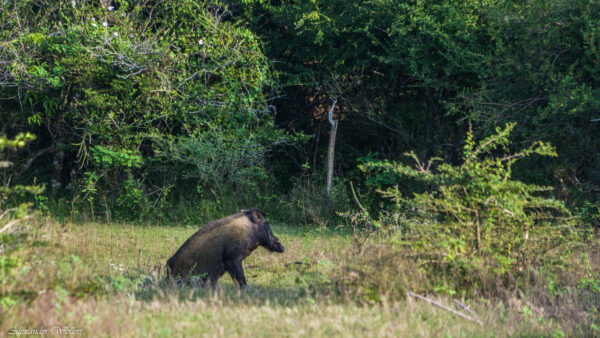
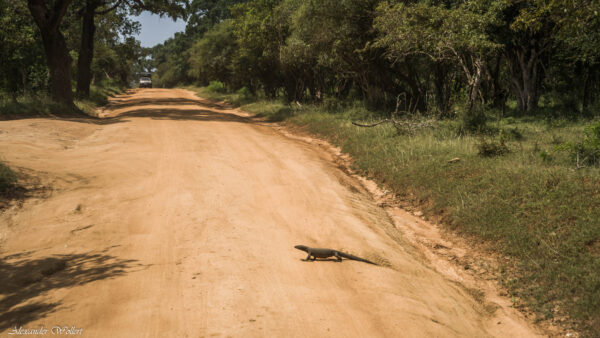
Peacocks
How do peacocks survive in an environment full of predators?



Although the whole of Yala is a big swamp, there are no mosquitoes here!
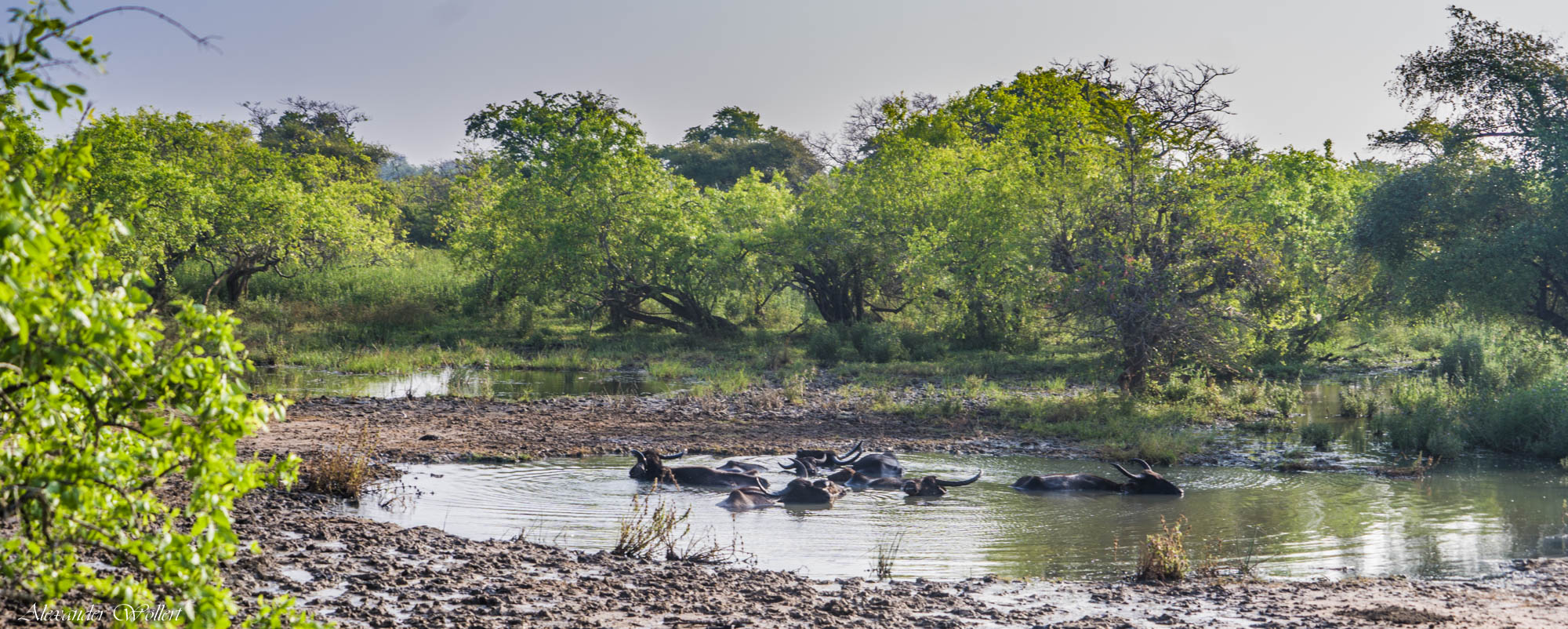
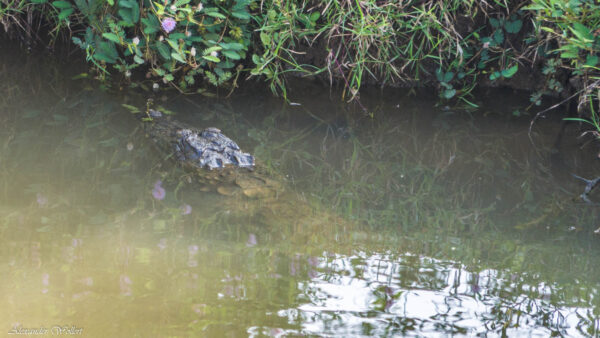
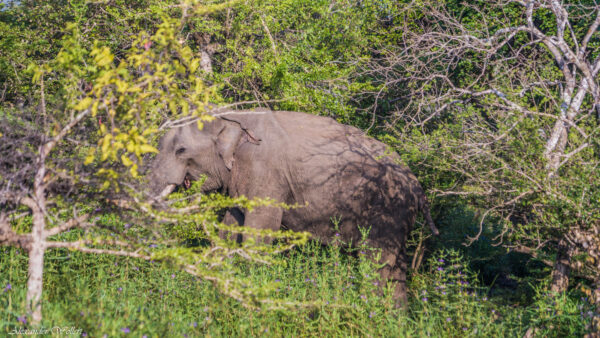
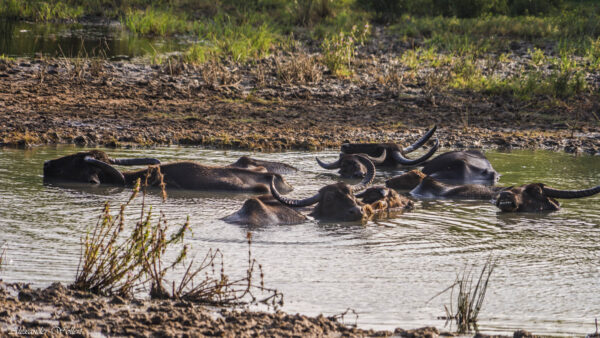

Monkeys
We stop at a place in the park where many other off-road vehicles also come. The place is also known to the toque monkeys. Sanka warns us not to leave anything, absolutely nothing, in the Toyota Hilux, because the monkeys steal everything that is not fixed. I find it funny and can only see a few primates somewhere in the tree.
But they soon come down from the trees and start looking, begging and stealing. They run around unashamedly between our feet, jump into cars and steal something, only to find out somewhere else whether the stolen goods are even edible.
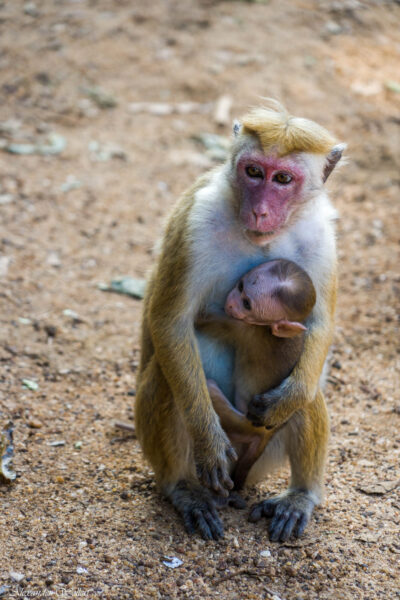
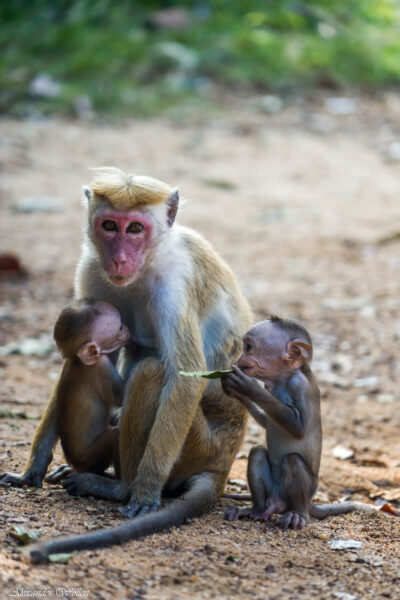
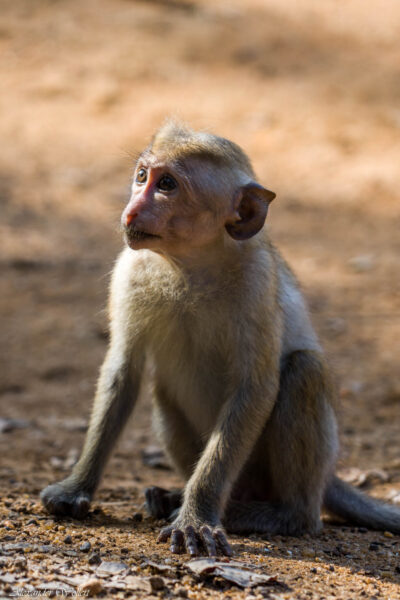

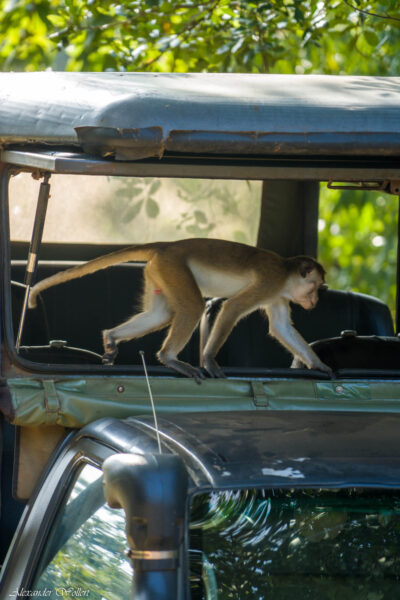

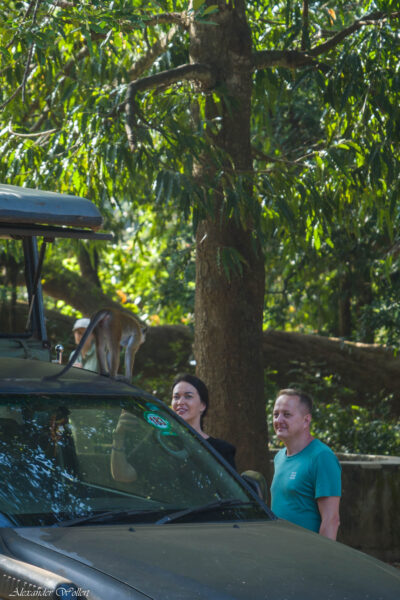
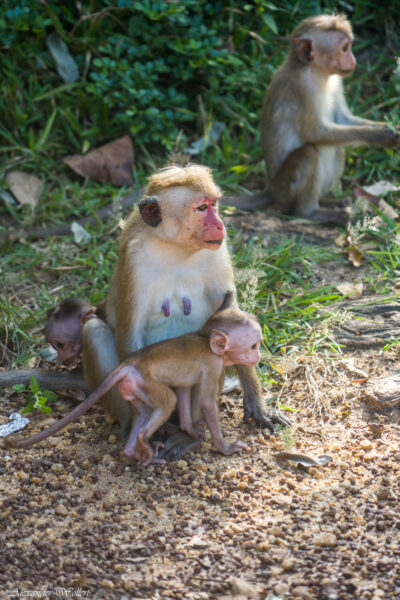
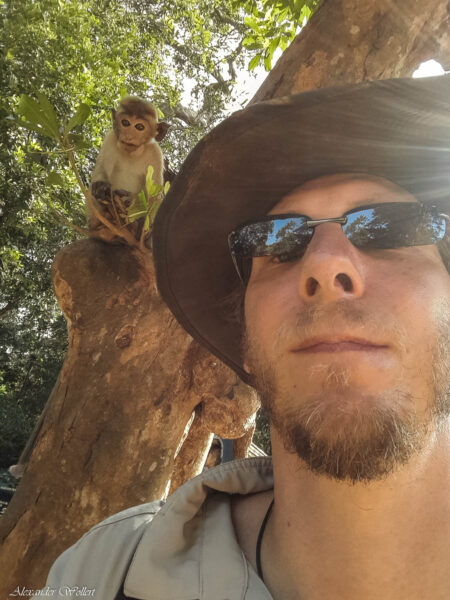
The toque monkeys watch, beg and steal!

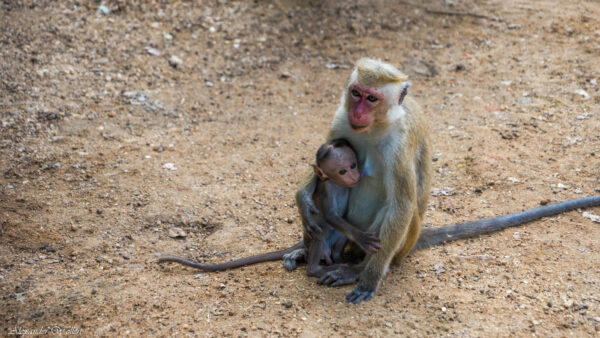


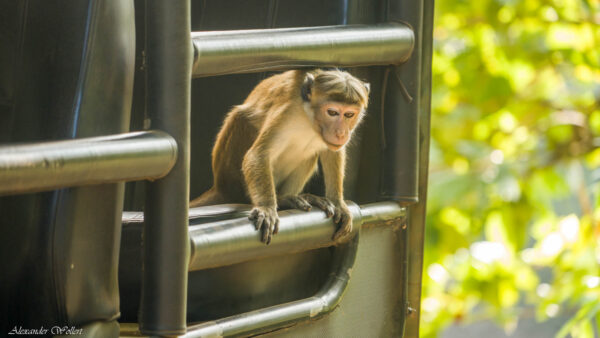
After the break we drive back onto lonely roads. It is not even lunchtime yet, but we have already seen so much. The park is a small Garden of Eden.
We have the quiet hope that we might still see a leopard in peace and quiet. Who knows, maybe around the next bend?
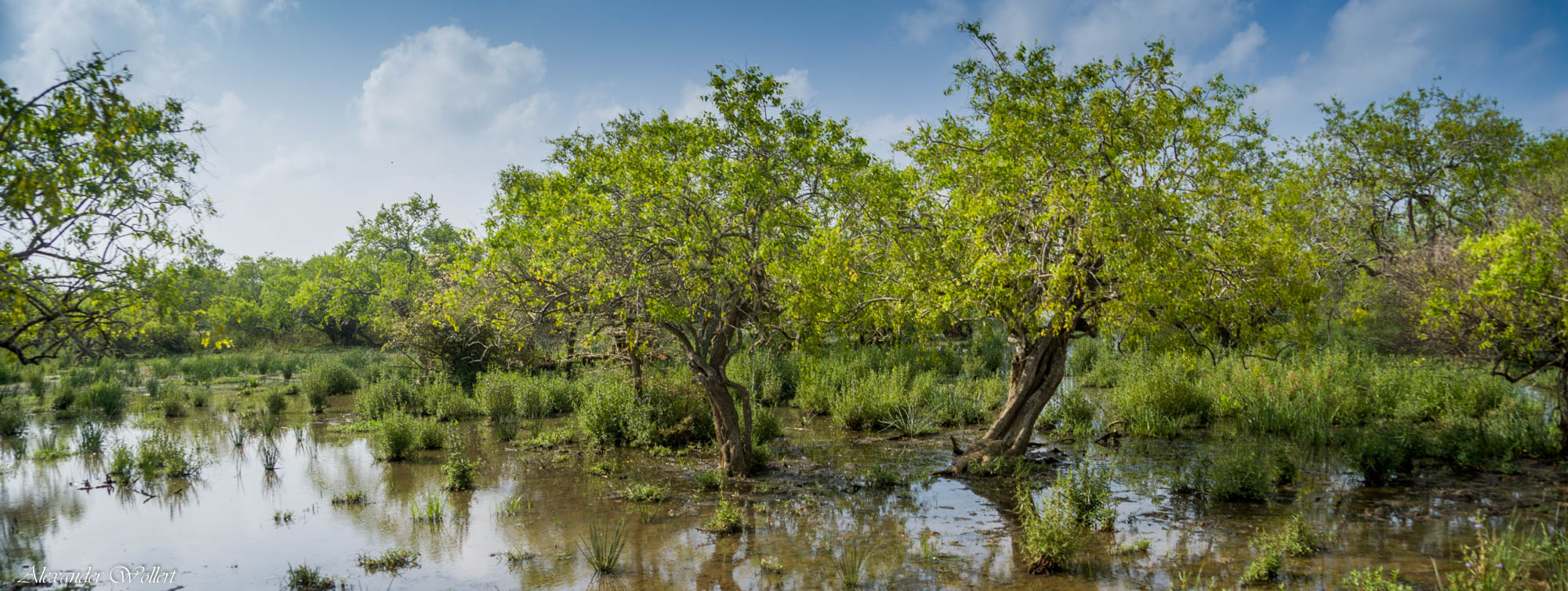


The park is like a Garden of Eden

We stop at a large waterhole and can watch a single elephant leisurely eating aquatic plants and diving under again and again, with only the trunk surfacing and blowing some water.
Then another female elephant comes out of the undergrowth with her calf. They join the single animal and bathe together. It is a beautiful sight.
Elephants
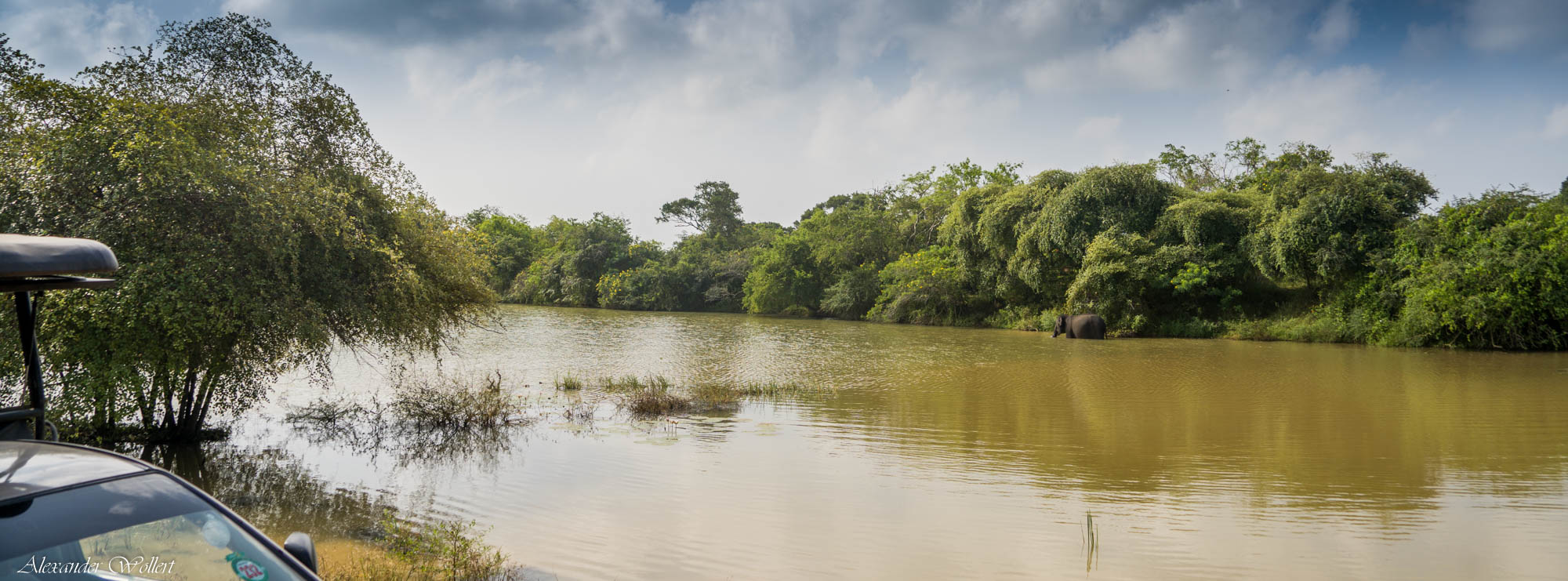

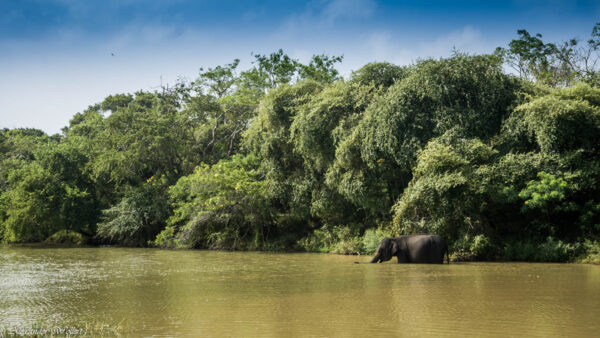

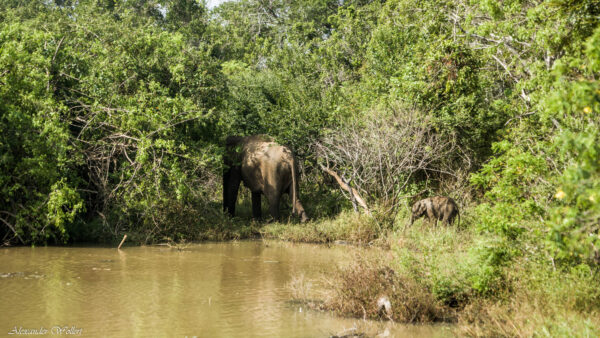

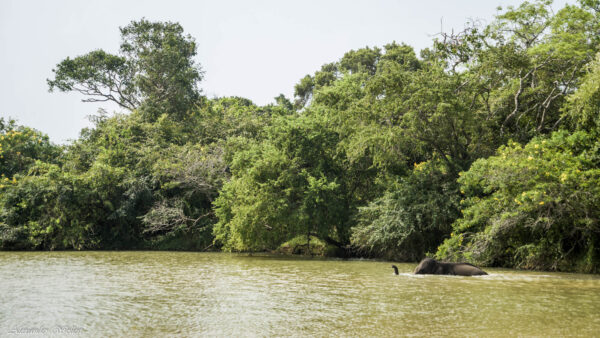


Family pool – it’s really hot too!
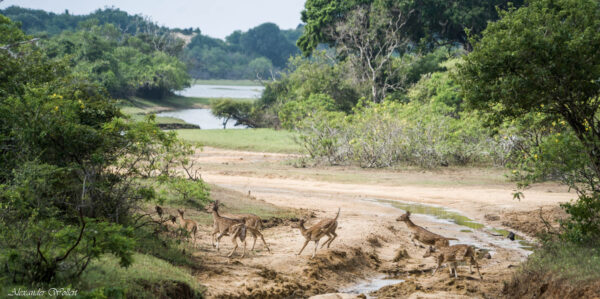
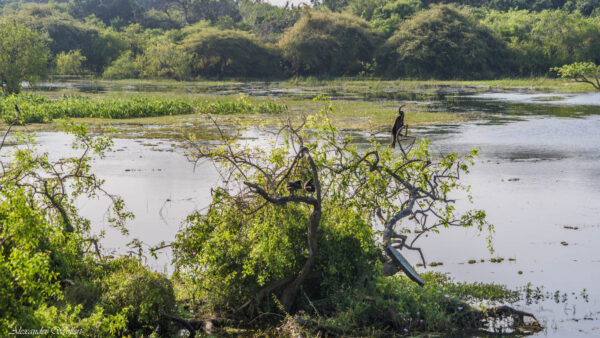
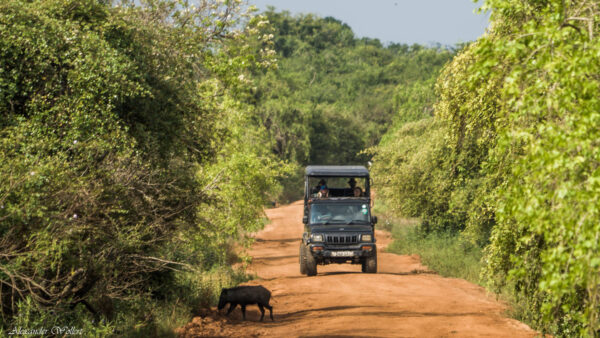
We don’t drive far before we come across more elephants. A large family is passing through. We tell our driver Sanka that he shouldn’t get any closer to the elephants.
It’s okay for us to see the pachyderms from a distance. Sanka reluctantly backs away.

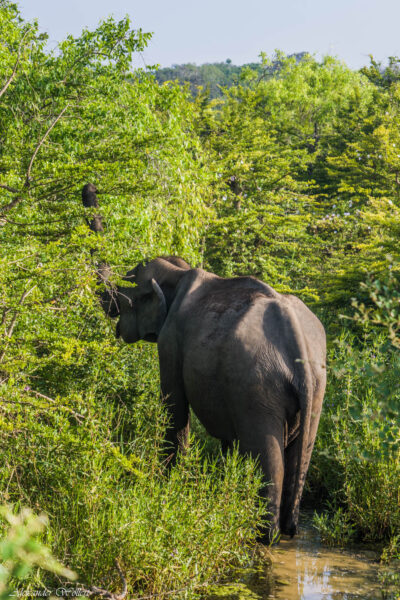
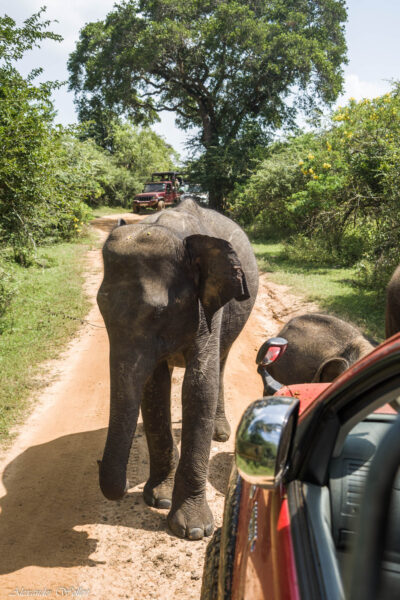


As a reward, the elephants come so close to us that we could touch them. We also observe a female elephant who appears to be heavily pregnant.
Unfortunately, other cars don’t show any restraint and almost drive into the elephants’ heels. That’s very annoying.


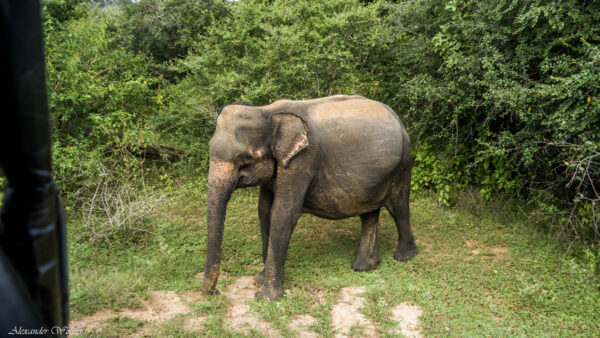
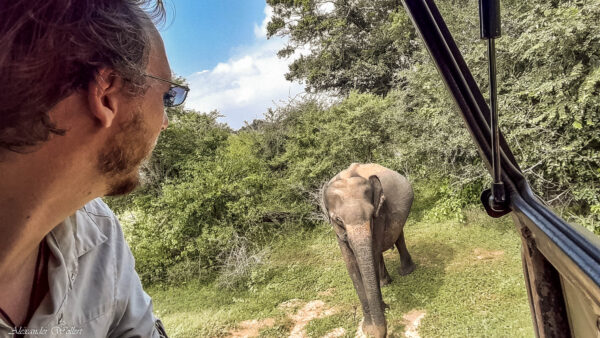
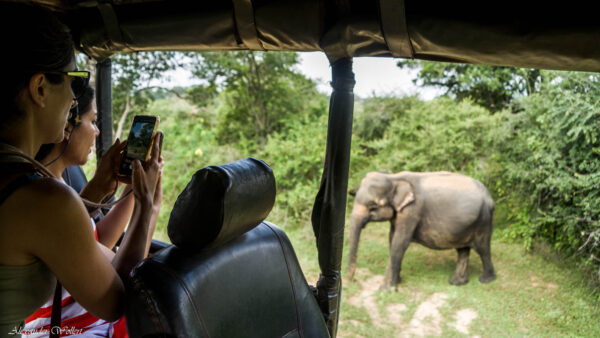
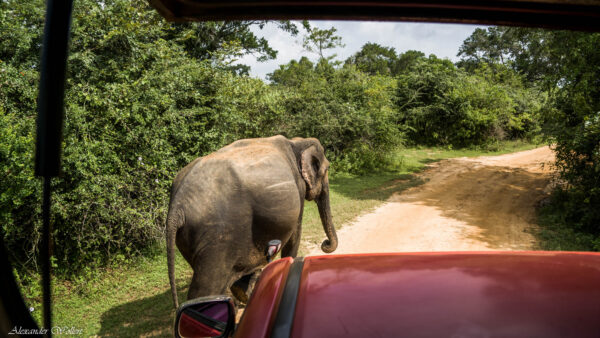


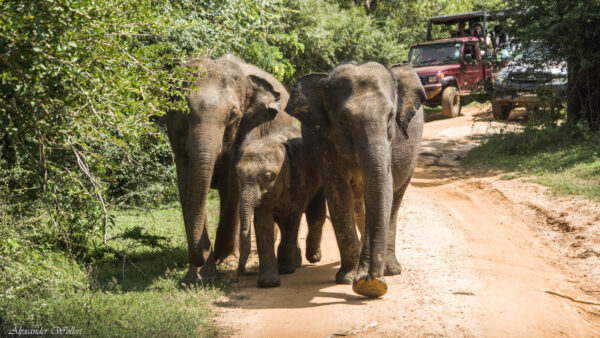
Bears
We are in good spirits because we have already seen so many animals and most of the day is still ahead of us. We are still talking about the exciting encounter with the elephants in the bush when Sanka stops abruptly.
We follow the direction of his index finger and see a few black, shaggy figures in the bushes. Then two small balls of fur and a large animal tumble out: sloth bears!
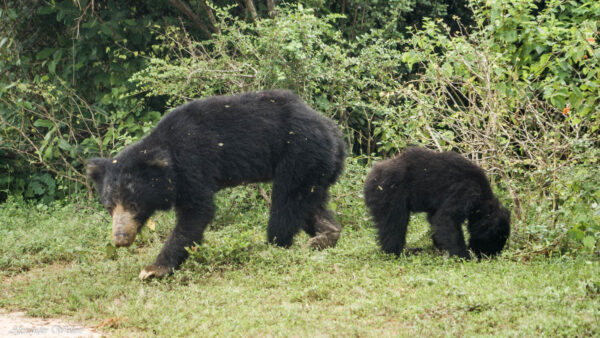

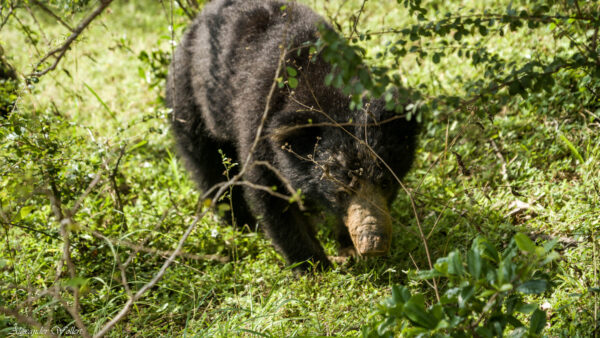

The bears are much smaller than I thought. Nevertheless, there are apparently still “attacks” by bears on people. The black furs have very poor eyesight and hearing. If they suddenly find themselves in front of a person, they get scared and attack.
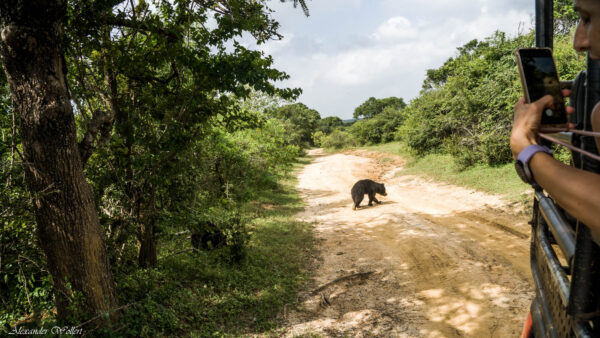

We are lucky enough to see not just a single bear, but a mother with two cubs. The mother bear is sniffing the ground and looking for something to eat, while the cubs just want to play. They trot past us very close. The wind seems to be coming from a different direction.

We let the bears slowly disappear into the bushes before we dare to speak again and are happy about this encounter. Only then does Sanka pick up his radio and report the bear sighting to his closest colleagues.
As we leisurely drive away, numerous other vehicles soon come towards us at high speed. We hope that the bears are well hidden and that there will be no bear hunt.

The Safari Guide Luxury Problem:
What else should you show your customers if you have already seen all the highlights by 10 a.m. and still have the whole day to fill?
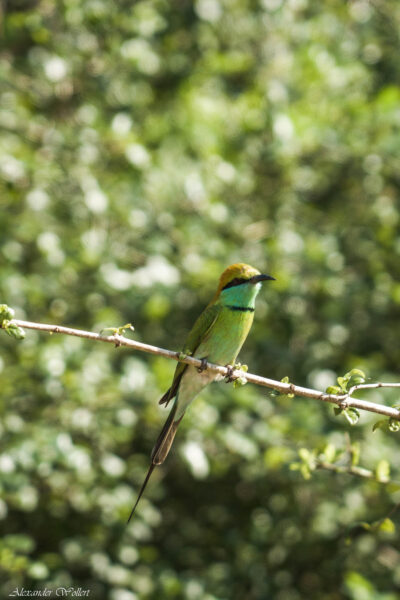
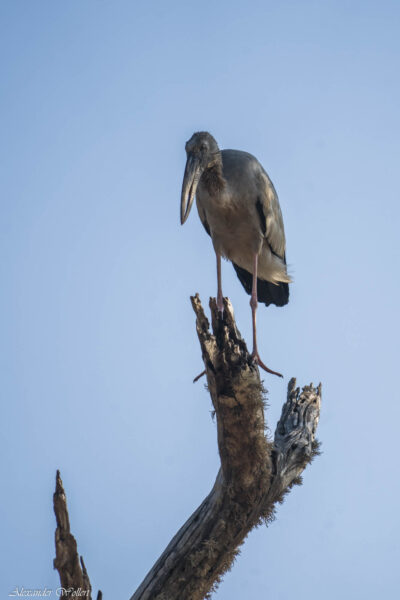
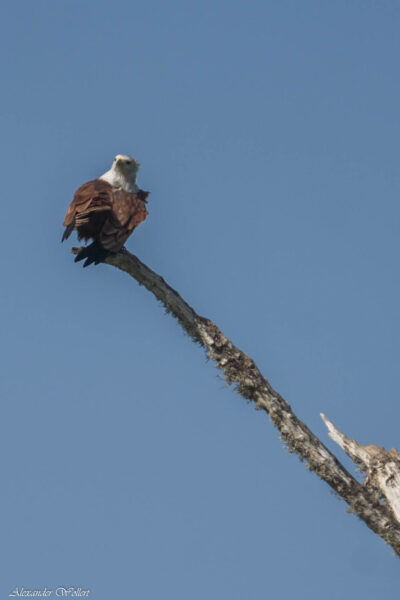

Sanka is very excited that we have now seen elephants, a leopard and bears with cubs. It couldn’t be better. On the other hand, he now has a problem: it is only 10 a.m. and he still has to entertain us all day!
We reassure him. We don’t need any more “attractions“. It’s nice to drive through this beautiful landscape and we enjoy the peace and quiet that we have as we take the roads away from other tourists.
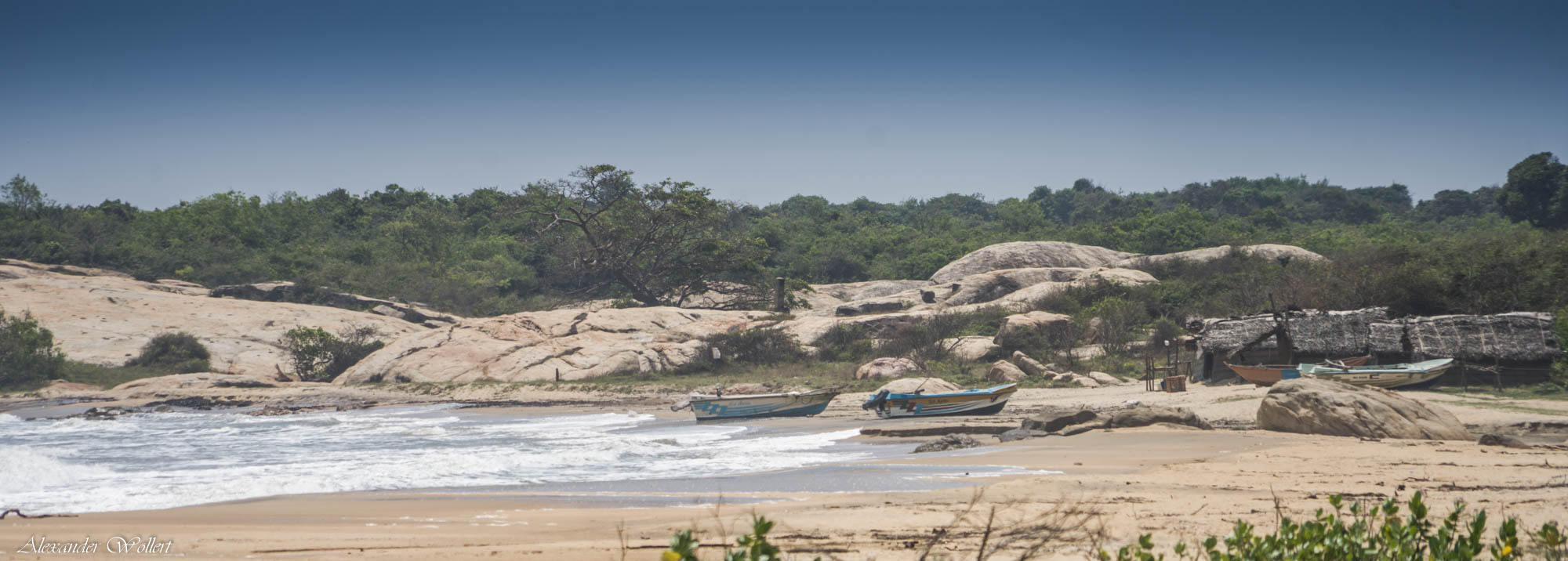
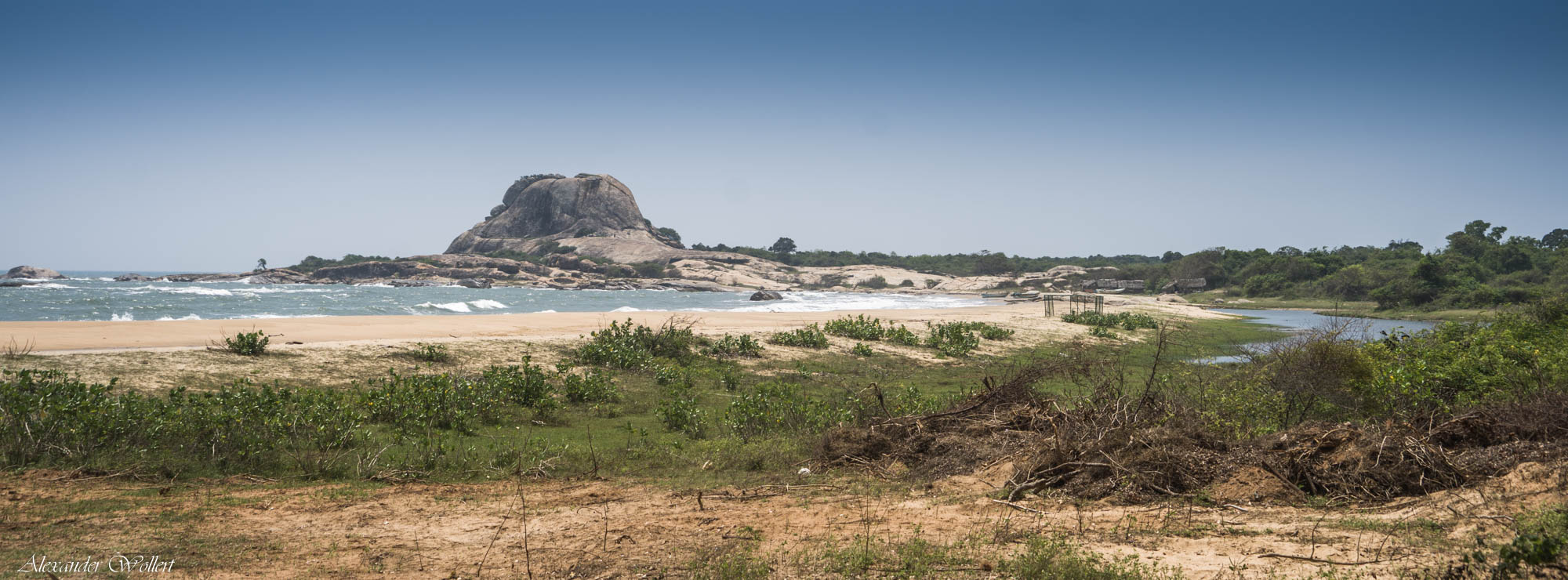
The Indian Ocean
We suddenly come out of the swamp and the forest and onto the sea. This change in the landscape is very unexpected and surprises me. The Indian Ocean lies before us, while we felt like we were in the middle of the African savannah. But I have also seen pictures of elephants walking on the beach and going into the sea. We are not so lucky today.
In the distance we see a small village and boats. Locals are allowed to live in their village and fish for their own needs. There is even a holy shrine in the middle of the national park, to which many believers make a pilgrimage every year. Of course, there are difficulties. Most of the attacks by leopards are on pilgrims.

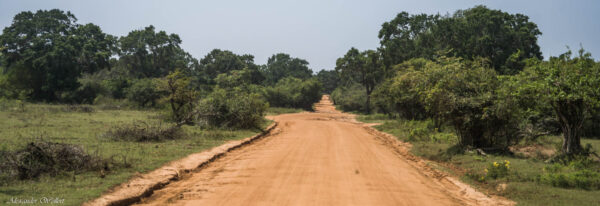
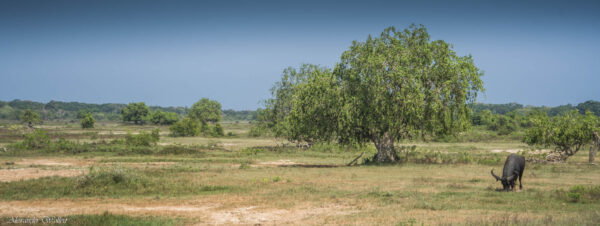

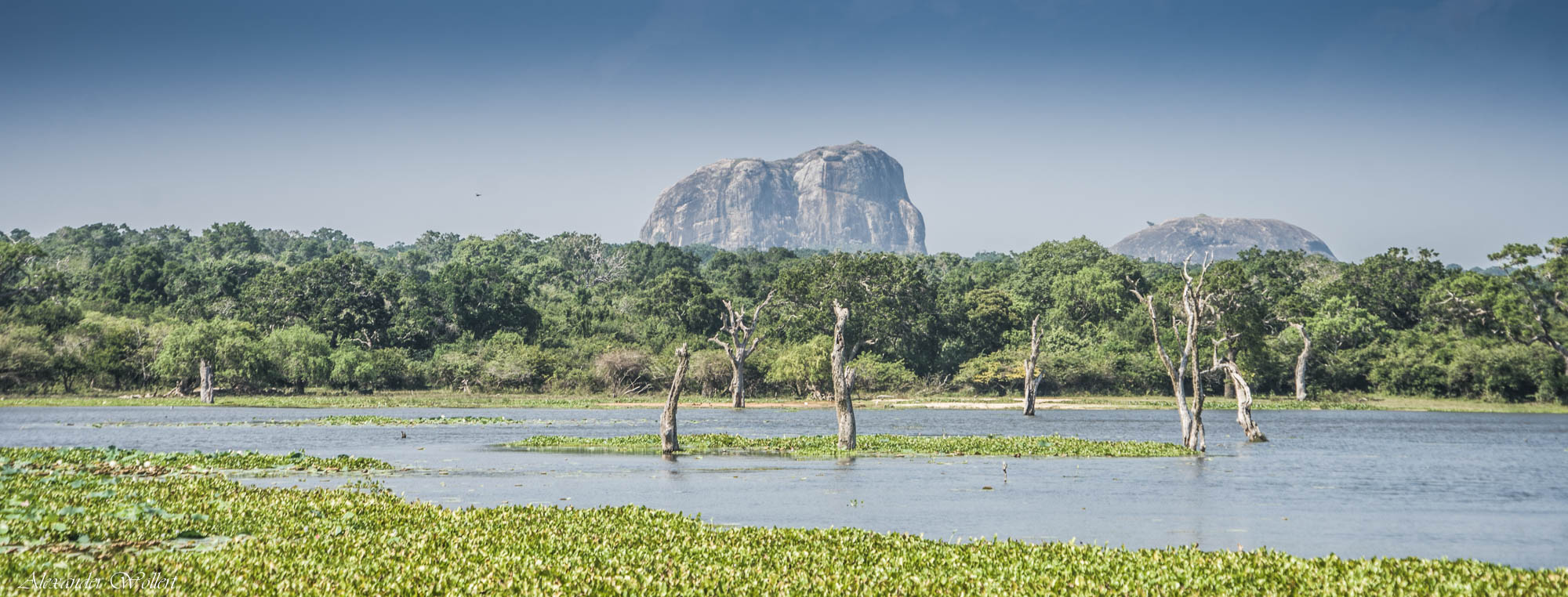


The water landscape of Yala
Outlooktraveller.com, WikipediaYala National Park is probably one of the most diverse and stunning national parks in Asia, with an attractive mix of landscapes: a combination of lush thickets, dry grasslands, freshwater ponds and brackish water lagoons. The park is a coastal forest, with the Indian Ocean on one side.
The flat landscape is occasionally interrupted by towering rock formations such as the Elephant Rocks. The outer parts of the park are dominated by monsoon forests. Two rivers, Kumbukkan Oya and Menik Ganga, feed these forests with water and also form small lakes and ponds.


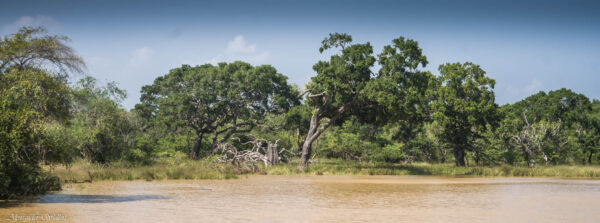

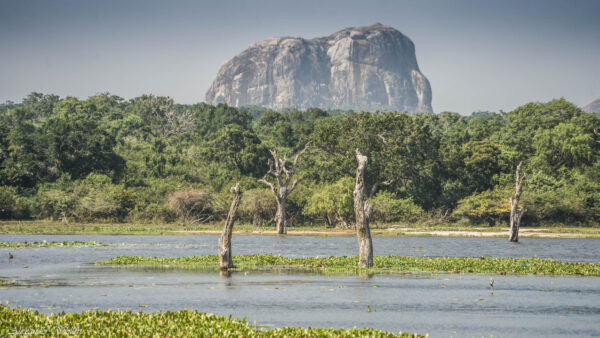

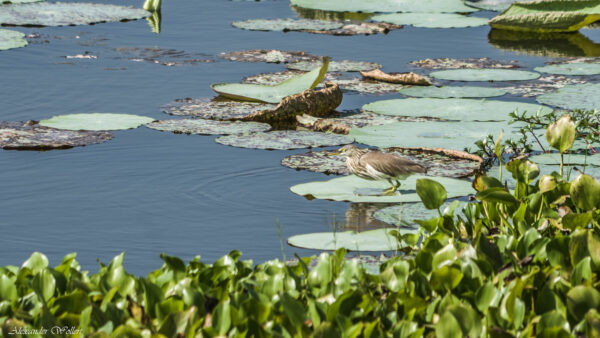
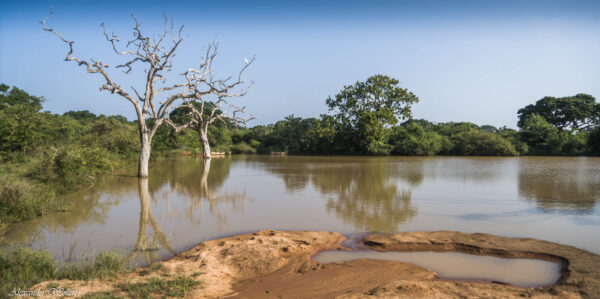


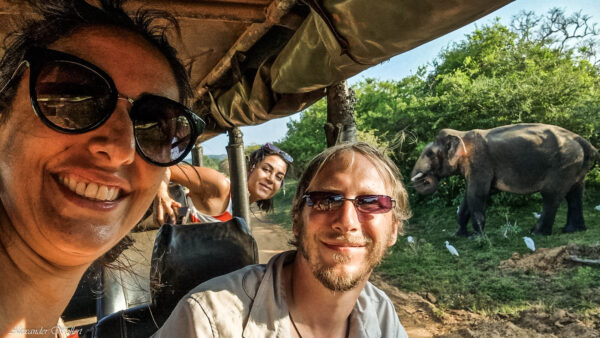
We see another elephant between the trees. This one is a bull. Most of the males no longer have any tusks. The elephants here suffered a similar fate to their counterparts in Africa, and the specimens with large tusks fell victim to poachers. Evolution quickly ensured that males without tusks were among the survivors and spread their toothless genes. Sanka says that we are lucky to see another elephant with tusks!
Sanka also tells us that some bull elephants have become thieves and, like the monkeys, attack tourists and steal their things. There are even elephants that leave the boundaries of the national park and block the nearby highway. They only open the road again when they have been given something to eat by one of the waiting cars. As a result, some of the commuters now carry melons or other fruits with them to “pay tolls” to the elephants.
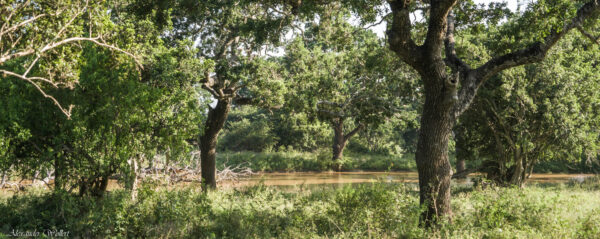
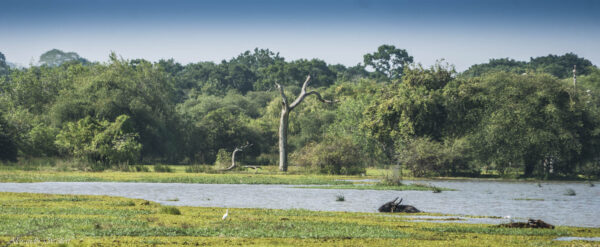
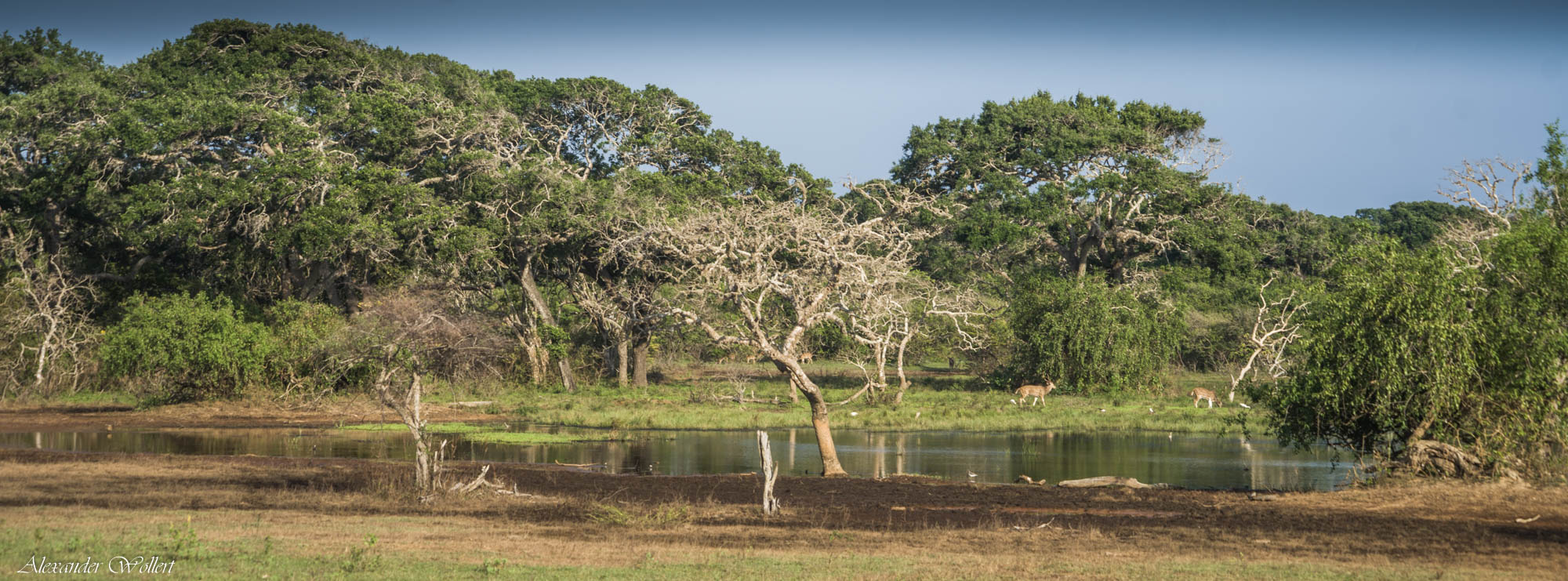
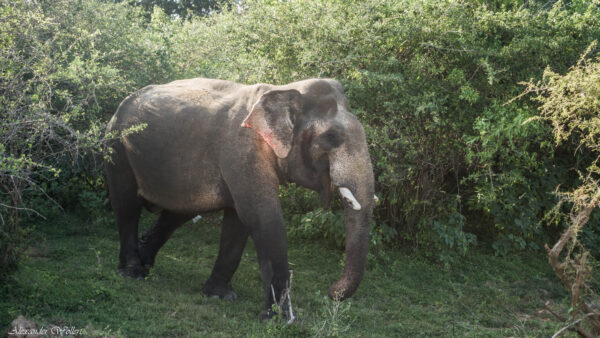
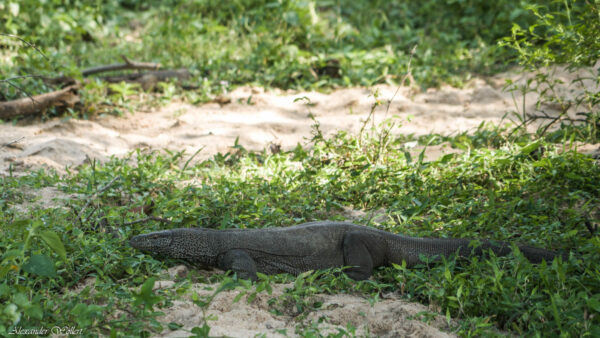


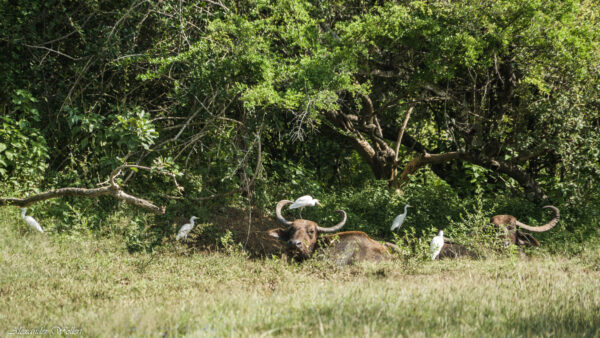

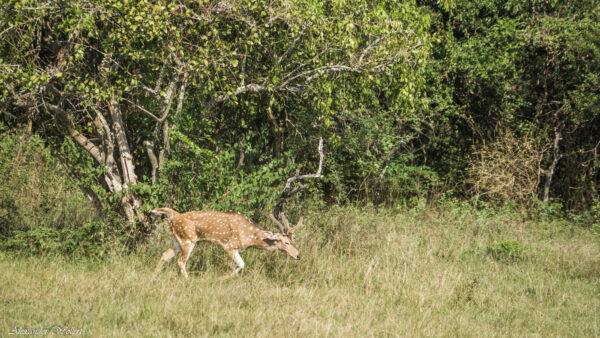
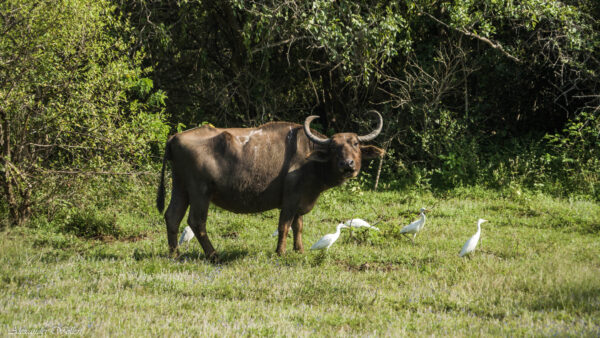



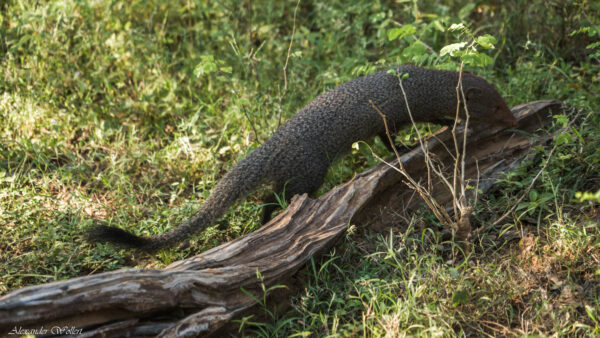
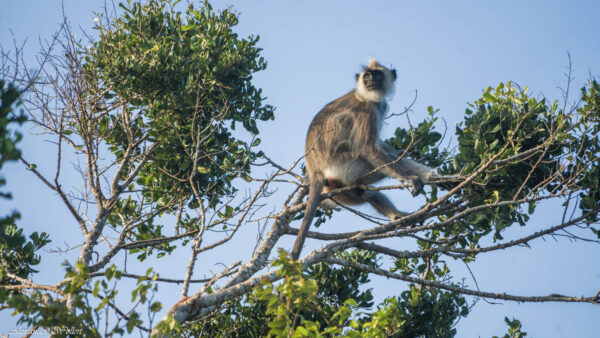
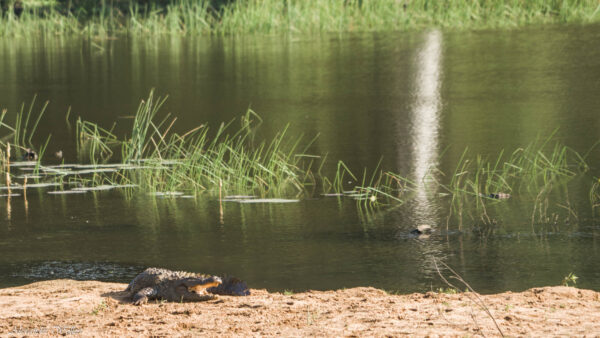
We had a very nice day on this safari. Sanka was also a lucky find. The next day Ethi and Maryam will also go on safari, but their driver is young and inexperienced and just follows the crowd of other drivers, so they hardly see any animals, let alone a jaguar.
We’re moving on in two days. We’re saying goodbye to the southern coast and heading inland and into the mountains. The small town of Ella is a stop for most visitors to Sri Lanka, as a famous train route through the tea mountains starts from here.

